Scottish Facts
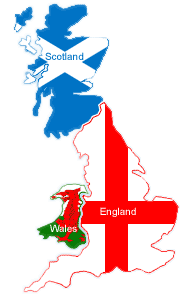
Did you Know Scotland is called Alba in Gaelic? Alba gu bràth means Scotland forever! Also known as Scots Gaelic is a language native to the Gaels of Scotland. It developed out of Old Irish and became a language sometime in the 13th century. Most of modern Scotland was once Gaelic speaking. However, in a 2011 census only 1.1% of the population (57,375 people) over 3 years old reported being able to speak Gaelic. Almost 4,000 Canadian residents claimed knowledge of Scottish Gaelic in the 2016 national census.
The Saltire (say salter) is the national flag of Scotland.
It is the oldest continuously used sovereign flag in the world, having been in use since AD 832! According to legend, in 832 A.D. King Óengus (II) (or King Angus) led the Picts and Scots in battle against the Angles under a king named Athelstan near modern-day Athelstaneford in East Lothian. King Angus and his men were surrounded and he prayed for deliverance. During the night Saint Andrew, who was martyred on an “X” shaped cross, appeared to Angus and assured him of victory. On the following morning a white saltire against the background of a blue sky appeared to both sides. The Picts and Scots were heartened by this, but the Angles lost confidence and were defeated. This saltire design has been the Scottish flag ever since.
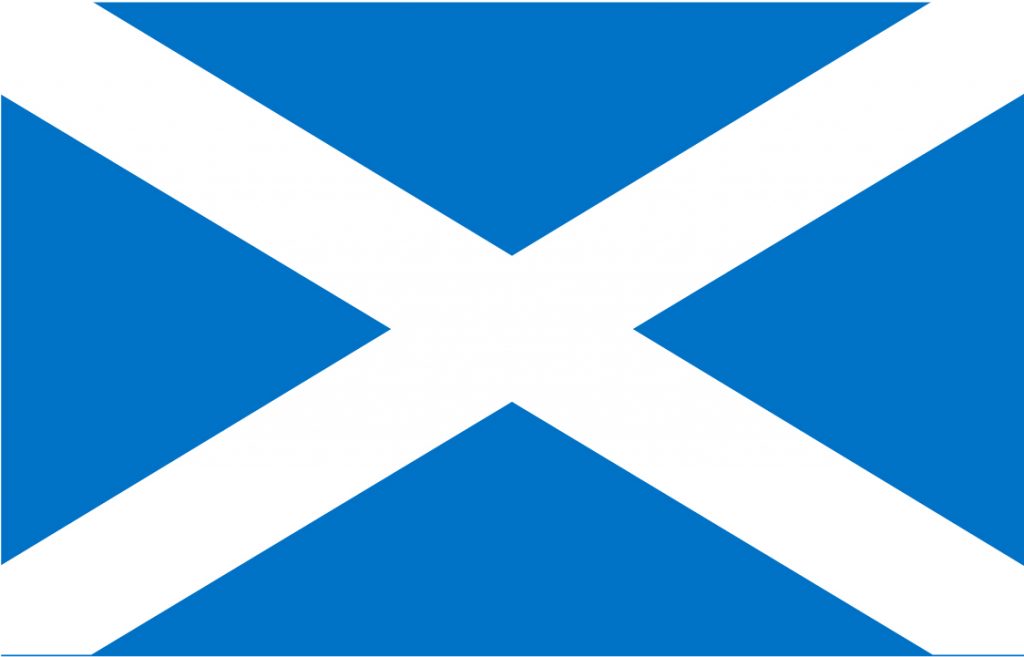
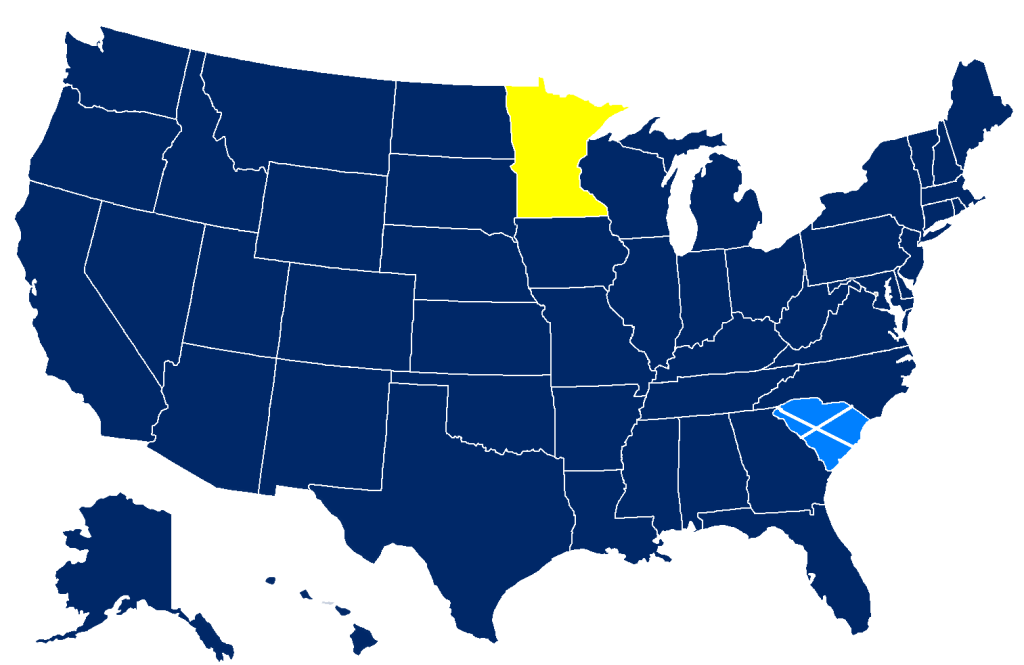
Did you know that Scotland is a little smaller than South Carolina?
According to worldatlas.com, Scotland’s total area measures 30,090 square miles. South Carolina measures in area 32,020 square miles and ranks #40 in size among the states. That means that 40 of the 50 states are bigger than Scotland! All of Great Britain (England, Scotland and Wales) total land and water measures 89,175 square miles or just a little larger than Minnesota (highlighted in yellow.)
Scotland has about 5.51 million people living in her borders with about 174 people per square mile. That compares to the population of Minnesota (5.7 million), but not to Minnesota’s population per square mile which is only about 70 people per square mile! It is interesting to see that Minnesota is about as big as all of Great Britain but has the population of Scotland! Scotland is much more crowded than the USA.
Scotland also includes 787 islands, of which most belong to groups known as the Hebrides, Orkney and Shetland but only 62 are over 3 square miles. This is one reason that so many Scots have been great sailors.
Did you know Scotland’s highest point is Ben Nevis?
Ben Nevis has a height of 4,406 feet which is comparable to Elliot’s Knob in Virginia at 4,463 feet, while Virginia’s highest point is Mount Rogers at 5,729 feet.
The mountain ranges of the southeastern USA are home to many of Scottish and Scotch-Irish descent whose ancestors favored this area which reminded them of the Scottish Highlands.

FYI: Alaska’s Mt. McKinley (also called Denali) is the highest mountain peak in North America, with a summit elevation of 20,237 feet above sea level. At 18,000 feet, the base to peak rise is considered the largest of any mountain situated entirely above sea level in the world!
It has also recently been proven that the mountains in Scotland are the same mountain range as the Appalachians in the USA! The Scottish mountains are now part of the Appalachian Trail! No wonder this area was so reminiscent of home to the Scottish immigrants!
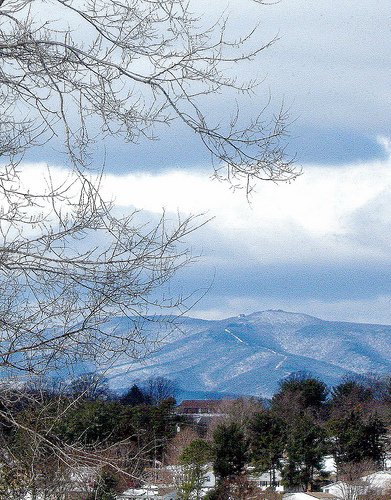
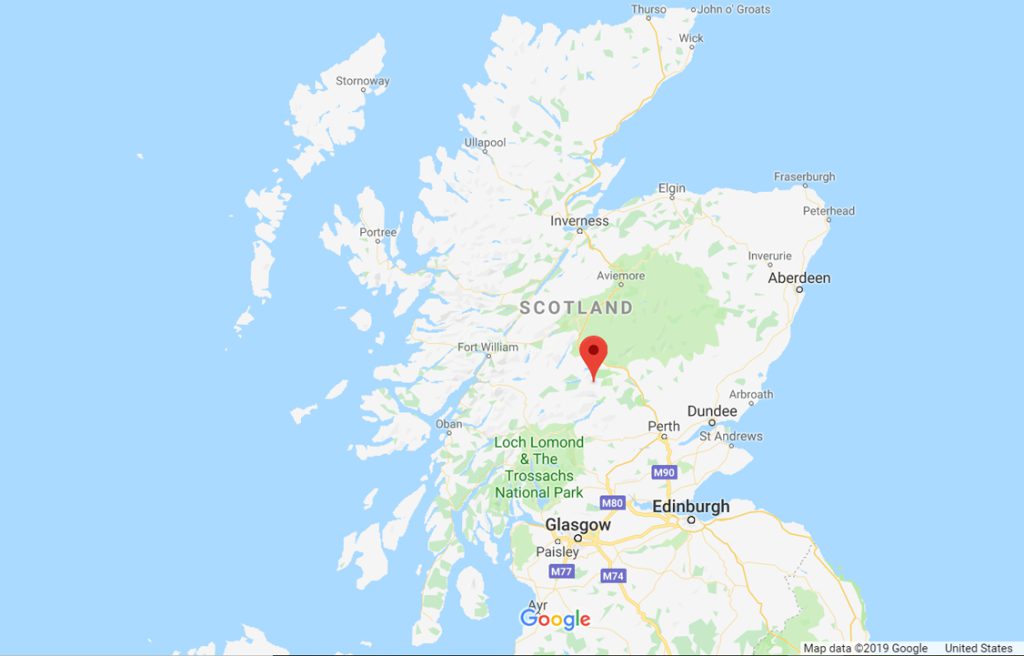
The geographic center of Scotland is Schiehallion.
(Scottish Gaelic: Sìdh Chailleann which means the Fairy Hill of the Caledonians.)
The lines of longitude and latitude drawn from the easterly and westerly most points and from the northly and southerly most points in Scotland intersect almost exactly at the summit of the mountain.
Did you know that the mass (weight) of the Earth was measured in a famous experiment in 1774 at Schiehallion? Schiehallion was chosen for it’s isolation from other mountains and it’s steep symmetrical slope which maximized the effect being measured and made the calculations easier at the same time!

The experiment also measured the mean density of the Earth from which a value for Newton’s gravitational force (G) could be deduced. Contour lines on maps were also a result of the experiment on Schiehallion! American history influenced the experiment as well. Anomalies detected while surveying the Mason-Dixon Line was one of the triggers for the experiment, and Benjamin Franklin was one of the members of the Committee of Attraction formed by the Royal Society to consider the matter and they sent astronomer and surveyor Charles Mason to choose a suitable mountain for the site of the experiment!
Did you know the Declaration of Arbroath was signed on April 6, 1320?
It is a formal declaration of independence and we celebrate its signing with Tartan Week and Tartan Day. Thomas Jefferson modeled our Declaration of Independence on the Declaration of Arbroath, and was one of the first times that the idea of the people choosing their own ruler was put forward! In fact it was Adam Gordon who was sent as ambassador by Robert the Bruce to the Pope who presented the Declaration of Arbroath and pled the case of the Scottish people.
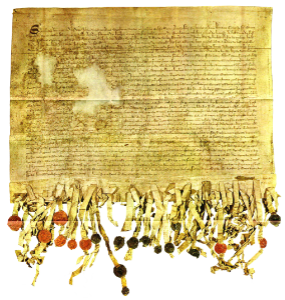
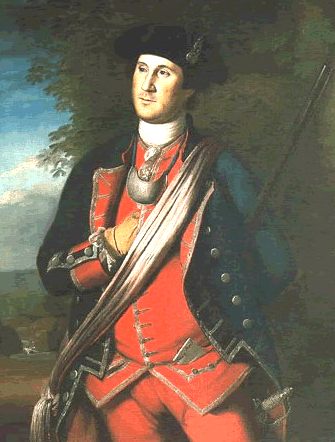
Did you know that George Washington was influenced by the Declaration of Arbroath?
The Declaration stated that “…for, as long as but a hundred of us remain alive, never will we on any conditions be brought under English rule. It is in truth not for glory, nor riches, nor honours that we are fighting, but for freedom – for that alone, which no honest man gives up but with life itself.”
George Washington’s back-up plan was always to stand with the Scots and Ulster Scots in his native Virginia! He said, “If all else fails, I will retreat up the valley of Virginia, plant my flag on the Blue Ridge, rally around the Scotch-Irish of that region and make my last stand for liberty amongst a people who will never submit to British tyranny whilst there is a man left to draw a trigger.”
Scotland’s motto is “Nemo me impune lacessit” or No one provokes me with impunity”.
That means if you push me around, you won’t get away with it, cause I will make you pay for it! In America this phrase was placed above an American Timber Rattlesnake on a 1778 $20 bill from Georgia (pictured right). This image was also seen on the very first US Marine Corps bright yellow drums in 1775 with the American translation of the phrase, “Don’t Tread On Me!” Same thing! The Gadsen Flag made it a famous image of the American Revolution. It was all inspired by our Revolutionary ancestor’s ties to Scotland!
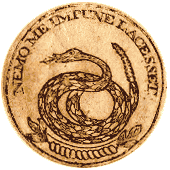
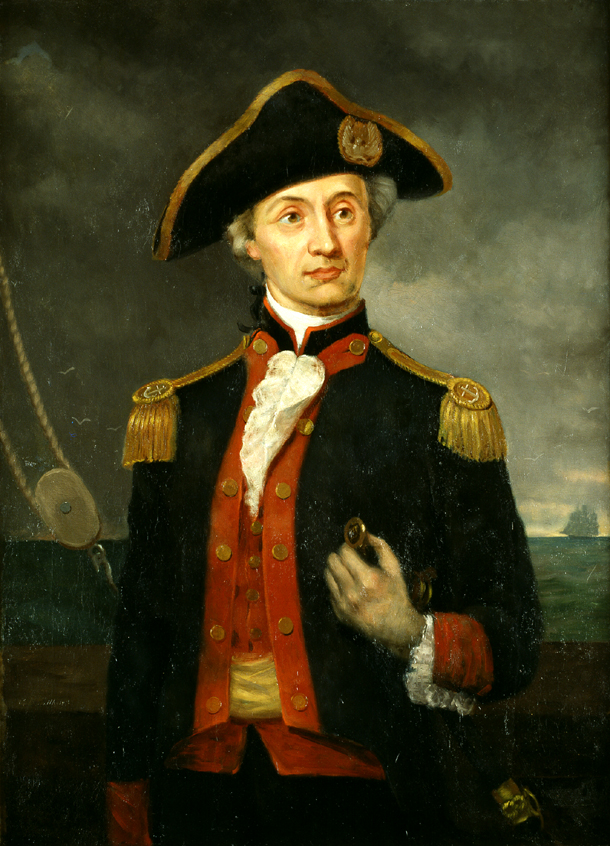
John Paul Jones was born in Kirkcudbright, Scotland.
He went to sea at thirteen and later moved to Fredericksburg, Virginia. There he met George Washington and Richard Henry Lee. He volunteered for service in the Continental Navy and through his daring example became known as the father of the United States Navy!
Did you know that Scotland is also known for being inventive?
Television, telephone, the video cassette recorder, finger printing, golf, tarmacadam (that’s black top) tires, and penicillin are all Scottish inventions — well sort of, at least they were all Scots who invented them!